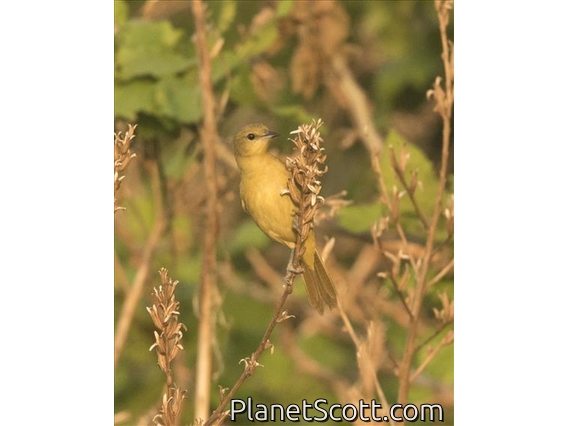Orchard Oriole (Icterus spurius)

Orchard Oriole (Icterus spurius) - Female
×


Orchard Oriole (Icterus spurius) - Female
About Orchard Oriole (Icterus spurius)
- Kingdom: Animals
- Phylum: Chordates
- Class: Birds
- Order: Perching Birds
- Family: American Blackbirds and Orioles
The orchard oriole is the smallest species of icterid. The subspecies of the Caribbean coast of Mexico, I. s. fuertesi, is sometimes considered a separate species, the ochre oriole or Fuertes's oriole.
Source: Wikipedia
Visits
-
2007-06-14
Cape May National Wildlife Refuge - Deleware Bay, United States of AmericaWoodcock Trail -
2008-01-04
Puerto Vallarta, Mexico -
2009-01-20
Crooked Tree, Belize -
2009-02-02
Santiago de Atitlan, Guatemala -
2009-02-03
Los Tarrales, Guatemala -
2009-05-05
Elgin - Bluff Spring Fen, United States of America -
2010-06-25
Elgin - Bluff Spring Fen, United States of America -
2012-07-10
170th St , United States of America -
2013-04-17
Brazoria NWR (UTC 108), United States of America -
2013-04-19
Bolivar Peninsula, United States of America -
-
-
-
-
-
-
-
-
-
-
-
-
-
-
-
-
-
-






